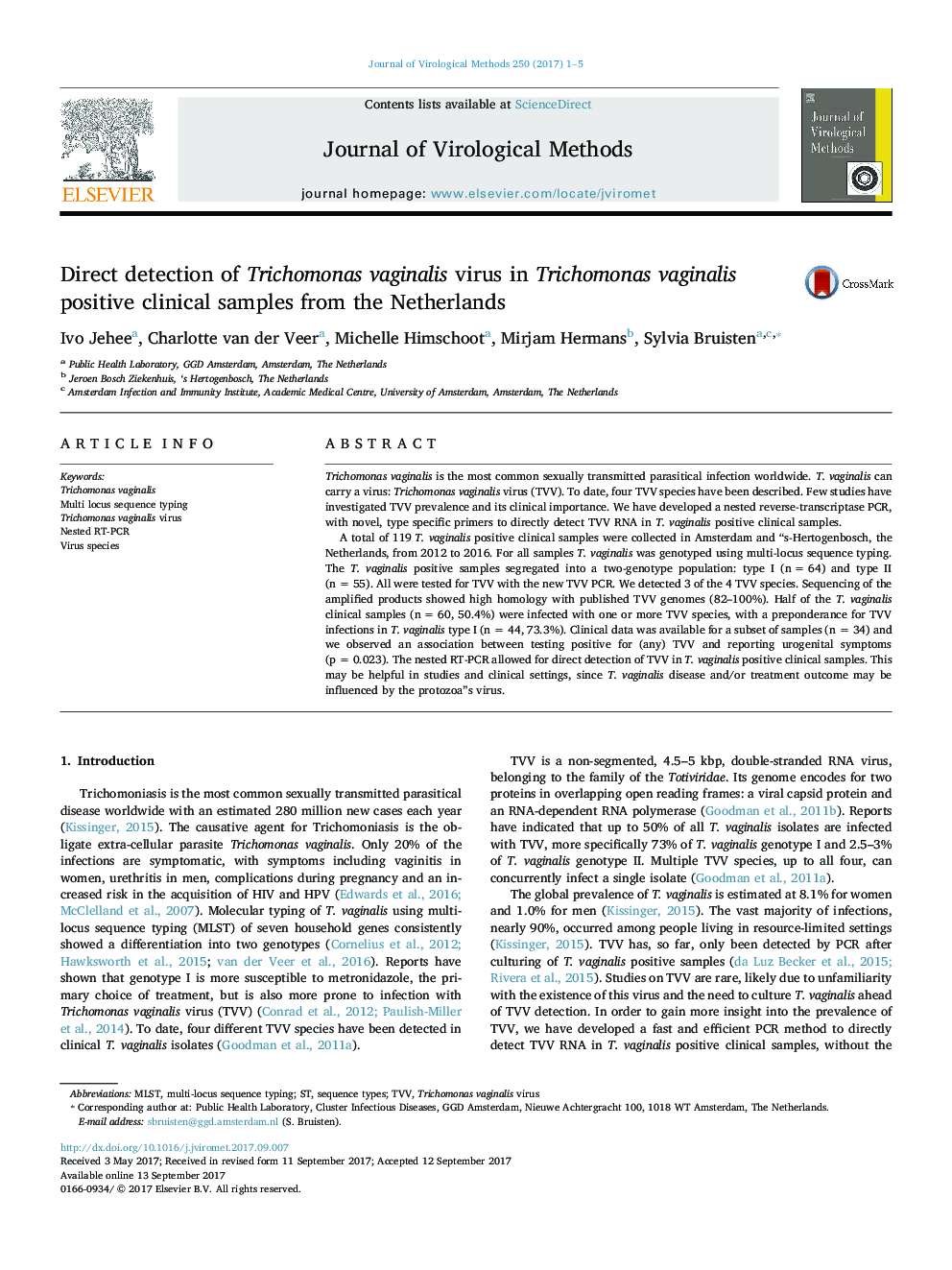| Article ID | Journal | Published Year | Pages | File Type |
|---|---|---|---|---|
| 5673130 | Journal of Virological Methods | 2017 | 5 Pages |
â¢Expansion of the MLST database for Trichomonas vaginalis types.â¢New, fast method for directly detecting T. vaginalis virus in clinical samples.â¢Primer sets were designed to distinguish between T. vaginalis virus species.â¢TVV prevalence in the Netherlands.
Trichomonas vaginalis is the most common sexually transmitted parasitical infection worldwide. T. vaginalis can carry a virus: Trichomonas vaginalis virus (TVV). To date, four TVV species have been described. Few studies have investigated TVV prevalence and its clinical importance. We have developed a nested reverse-transcriptase PCR, with novel, type specific primers to directly detect TVV RNA in T. vaginalis positive clinical samples.A total of 119 T. vaginalis positive clinical samples were collected in Amsterdam and “s-Hertogenbosch, the Netherlands, from 2012 to 2016. For all samples T. vaginalis was genotyped using multi-locus sequence typing. The T. vaginalis positive samples segregated into a two-genotype population: type I (n = 64) and type II (n = 55). All were tested for TVV with the new TVV PCR. We detected 3 of the 4 TVV species. Sequencing of the amplified products showed high homology with published TVV genomes (82-100%). Half of the T. vaginalis clinical samples (n = 60, 50.4%) were infected with one or more TVV species, with a preponderance for TVV infections in T. vaginalis type I (n = 44, 73.3%). Clinical data was available for a subset of samples (n = 34) and we observed an association between testing positive for (any) TVV and reporting urogenital symptoms (p = 0.023). The nested RT-PCR allowed for direct detection of TVV in T. vaginalis positive clinical samples. This may be helpful in studies and clinical settings, since T. vaginalis disease and/or treatment outcome may be influenced by the protozoa”s virus.
